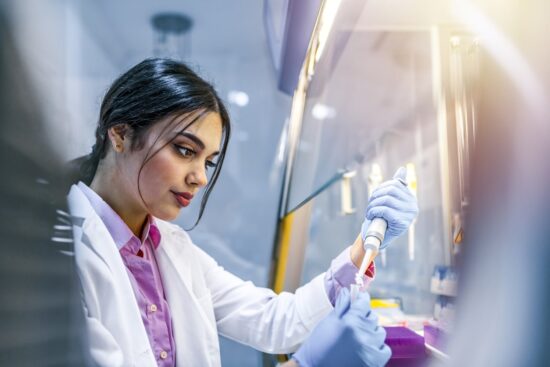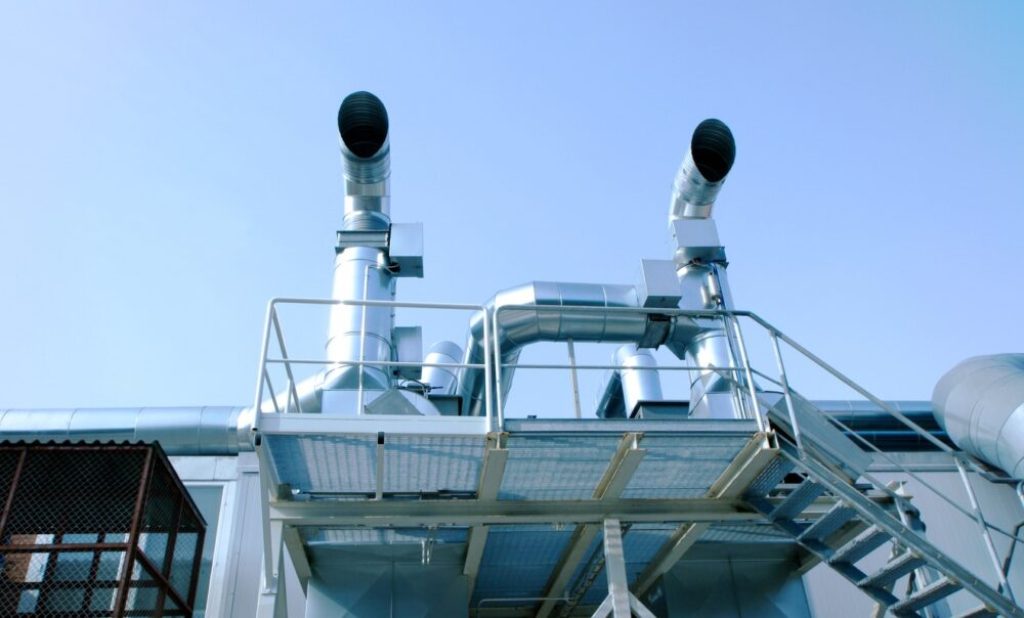Controlling the ventilation and air quality in a laboratory is often one of the more difficult tasks at the planning phase. And although air quality can have a direct (and unwanted) impact upon any research carried out in the laboratory, it is vital that all members of the research team are able to work in a comfortable environment that’s conducive to productivity.
There are two main types of ventilation used in research facilities and commercial labs: natural ventilation and mechanical ventilation. Both varieties of laboratory ventilation help to reduce contaminants in the air within different environments, but in different ways.
Below, we’ll look at this ventilation in more detail, along with key elements which must be considered when implementing laboratory ventilation.
Natural ventilation
Relying on wind pressure to pump research labs full of fresh air through purpose-built openings including windows, doors, solar chimneys, wind towers and vents, natural ventilation. Because of this, it can be hard to control and manage natural ventilation – with air becoming stagnant if doors and windows are kept closed. As a result, the effectiveness of natural ventilation can be dependent on things like climate, building design and human behaviour, as well as the speed and direction of wind on any given day.

Mechanical ventilation
Mechanical ventilation, such as air conditioning units, can help control the temperature and quality of the air entering the laboratory. These systems can be used to control the humidity and the general comfort of the environment.
As a result, mechanical ventilation can be controlled more rigorously than natural ventilation. That said, it’s unlikely to remove all contaminants in the air. This means that laboratories may need an additional supply of fresh air, pumped throughout the environment to maintain the wellbeing of the research team.
There are two types of mechanical ventilation, with climate dictating which type should be used in laboratory environments.
- Positive pressure mechanical ventilation: Best used in warm and humid climates where infiltration may need to be minimised in order to reduce condensation. In a positive pressure mechanical ventilation, the room is in positive pressure and the room air is leaked out through envelope leakages or other openings.
Negative pressure mechanical ventilation: Better suited to cold climates where exfiltration must be prevented to minimise condensation. In a negative pressure system, the room is in negative pressure, and the room air is compensated by “sucking in” air from the outside.
Hybrid or mixed-mode ventilation
Hybrid ventilation is a system that involves using mechanical ventilation when the natural ventilation flow rate is too low.
Should natural ventilation by itself not be suitable, exhaust fans can be installed in order to increase ventilation rates – which is why such systems are often used in rooms housing patients with airborne infection.
While hybrid ventilation is simple in theory, such systems must also be used with care. For instance, exhaust fans should ideally be installed where room air can be exhausted outside through a wall or roof. Additionally, these exhaust fans can also pose problems when installing them. In particular, large fans can be noisy, cause increased or decreased temperature in the room and the need for a non-stop supply of electricity.
Standardisation of Ventilation
The Workplace (Health, Safety and Welfare) Regulations 1992 dictate that all employers are required to ensure that all enclosed workplaces are ventilated with a sufficient quantity of fresh or purified air. The regulations also stipulate that the fresh air supply rate should never fall below 5 to 8 litres per second, per occupant.

- The layout and workflow of the facility
- Temperature and relative humidity
- The difference in air pressure between rooms
- The number of air changes for each room
- Air velocity and airflow patterns
- The number of particles in the air
- Cabinetry and other structures which may reduce effectiveness of ventilation
In need of a cutting edge laboratory which offers a healthy and beneficial work environment for your research team? The InterFocus team can help every step of the way. To get started on your next laboratory project, visit our homepage or call our dedicated team on 01223 894833.


 Negative pressure mechanical ventilation: Better suited to cold climates where exfiltration must be prevented to minimise condensation. In a negative pressure system, the room is in negative pressure, and the room air is compensated by “sucking in” air from the outside.
Negative pressure mechanical ventilation: Better suited to cold climates where exfiltration must be prevented to minimise condensation. In a negative pressure system, the room is in negative pressure, and the room air is compensated by “sucking in” air from the outside.

